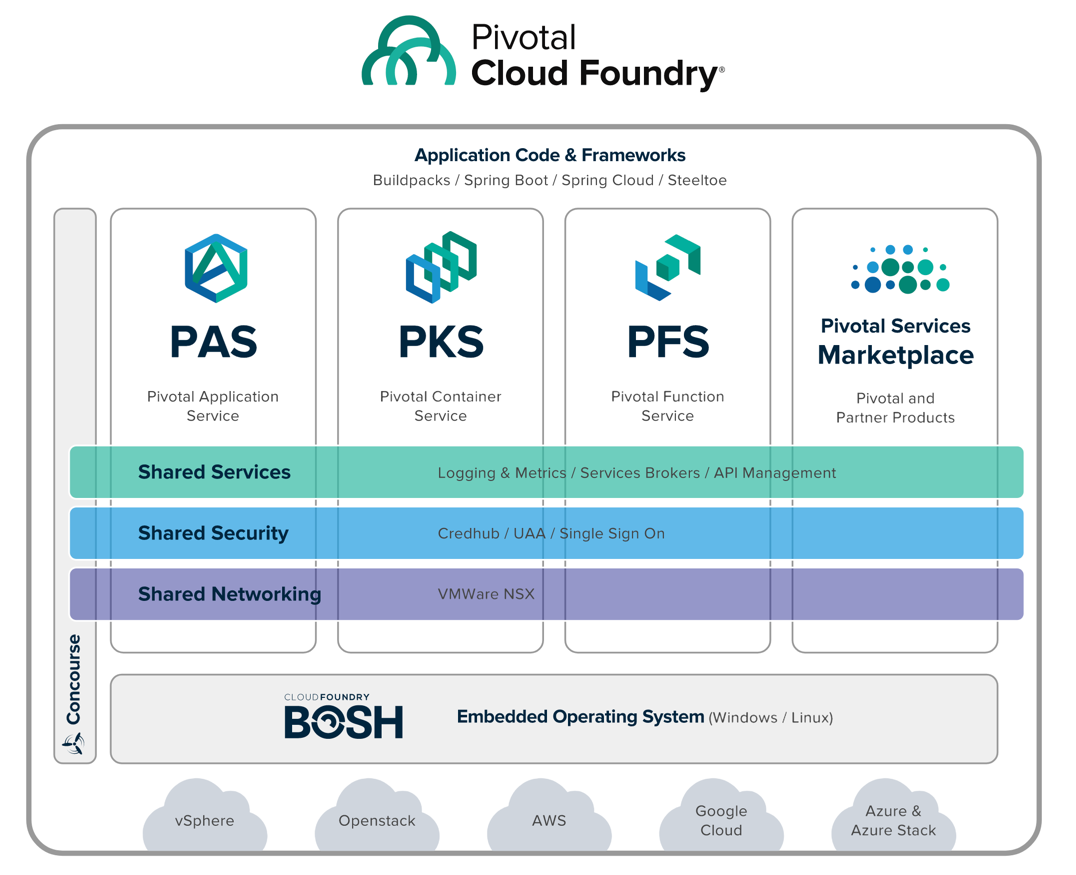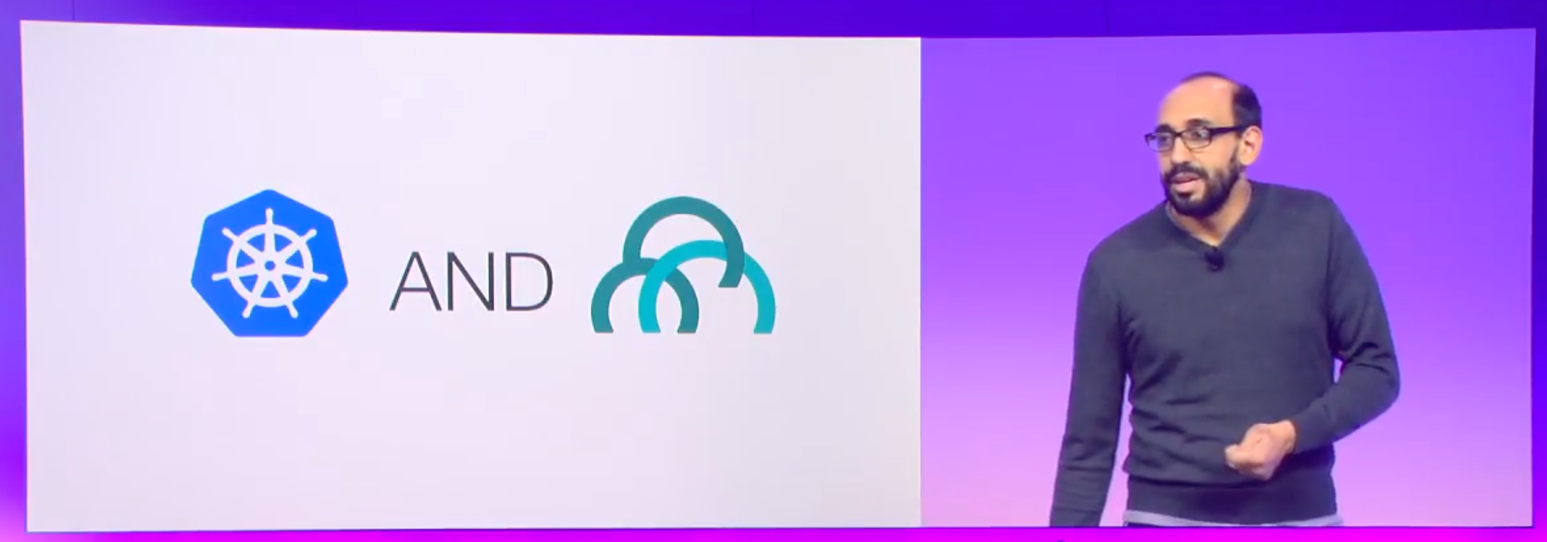Richard Watson from Gartner led a customer panel in the final round of keynotes at SpringOne. In it, he asked the company leaders what blew their minds during the conference. Of course, it got me thinking about what blew my mind at SpringOne Platform this year. Here’s what I came up with, in no particular order.
Panel discussion with @comcast, @HomeDepot and @Mastercard led by @Gartner_inc VP @richwatson. @dendrobates, @sheetalpole, and @IAmGregOtto are all sharing what blew their minds about their week at #springone. pic.twitter.com/nDQKPEDAXm
— Bryan Friedman (@bryanfriedman) December 7, 2017

1. A High Quality Event
I’ve been to a fair amount of conferences in my career, and this one was truly top notch. Conferences are often draining and it can be hard to keep up the excitement throughout the week. This event felt elevated from the moment I checked in at Moscone Center. You had to be there to feel it I guess, but all these things contributed to the greatness:
- Signage and graphics looked amazing and were well themed. Complete with ASCII art and 8-bit renditions of the keynote speakers.
- The main stage room was incredible, and the keynote speaker lineup was tremendous. It was a nice mix of tech talks, customer stories, and philosophy. Everyone seemed to engage for the full two hours. That’s quite a feat.
- The breakout sessions were right-sized, on point, and on schedule. And they were well attended! During sessions, the hallways were empty, with only a few stragglers at some booths or on laptops.
- It had a fun vibe! Lots of discussion and socializing. Plenty of power strips everywhere. Coffee, drinks and food available at regular intervals. There were even old school arcade games!
We know @pivotalcf is great at Day 2 operations. Today we see that #springone is great at Day 2 keynotes. Another amazing lineup. pic.twitter.com/Y04tLDWufW
— Bryan Friedman (@bryanfriedman) December 6, 2017
It’s an honor to be a part of this team that helped build an amazing experience at #springone pic.twitter.com/ETNQAzMVBj
— Lauren Volpi (@laurenvolpi) December 7, 2017
Congrats to all the planners of #SpringOne this week. First conference I’ve been to where keynotes were as strong as tech breakouts. That’s not a knock on breakouts, it’s a comment on keynote quality.
— Dan Baskette (@dbbaskette) December 8, 2017
2. Open Source is Thriving in the Enterprise!
When I saw links to GitHub repos in the Comcast and Intuit sessions, it was another mind blowing moment. It’s been a long road, but we’re finally there. Open source is in the enterprise for real. And I’m not talking about using open source software, though that’s impressive too. I mean that enterprises are contributing code back to the open source community.
Comcast has a lot of stuff out there, including a BOSH release for telegraf. Intuit showed off a validator and inspector for Spring Cloud Config. Other companies using PCF like Home Depot and Mastercard seem to have thriving public GitHub repos as well. What a time to be alive.
.@PhillyTJL of @comcast mentioned something I thought was interesting – they wrote a BOSH release for the Telegraf agent, used as a BOSH Add On for existing BOSH releases, and it’s open source! #SpringOne https://t.co/0btHywDD0V
— Brian McClain (@BrianMMcClain) December 6, 2017
Hearing @marcellodesales talk about dealing with config management at @Intuit. Solution: Config-as-a-Service using @springcloud config server. Presentation is complete with awesome #StrangerThings references. #springone pic.twitter.com/nMPsuOiyrY
— Bryan Friedman (@bryanfriedman) December 7, 2017
3. Windows and .NET at a Spring Conference!?
The announcement of PCF 2.0 highlighted some key Windows-related features. First, native Windows Server 2016 containers for .NET workloads. In one demo, Richard Seroter showed off ssh-ing directly into a Windows container. Typing dir into an ssh window may feel weird, but what a relief for .NET developers.
Speaking of feeling weird, how about displaying hardware at a software conference? That’s right, PCF 2.0 will have beta support for Azure Stack. The Microsoft booth had a working Dell EMC server cabinet to showcase it. Mind blown.
BTW, during my #springone demo today, I showed off native Windows Server Containers in @pivotalcf. That's a working "cf ssh" command against a Windows app. Now. Not months from now! pic.twitter.com/VaAwFLqS4k
— Richard Seroter (@rseroter) December 5, 2017
Just saw awesome demo of @pivotalcf on @dellemc #AzureStack serial number 00000001! #SpringOne cc @ealeyner @ncayou @CoreySandersWA @natmack @Azure pic.twitter.com/R0zskZB6eg
— F a i z P a r k a r (@_CloudNinja) December 7, 2017
4. A Who’s Who of Cloud Native Celebrities
There were plenty of cloud famous folks to be found in both the keynotes and breakout sessions. I’m not ashamed to admit I had my fair share of geek out moments during the week. I’ve followed a lot of these tech personalities on Twitter for a long time, even before I joined Pivotal. So getting to see or meet a lot of them in person for the first time was super cool. It’s like bringing my Twitter feed to life.
People like James Watters, Andrew Clay Schafer, Onsi, Coté. Or legends of the Spring community like Juergen Hoeller, Phil Webb, Kenny Bastani and Josh Long. There was an entire panel of brilliant women — Cornelia Davis, Meagan Kjelland, Therese Stowell, Erin Schnabel, and Mathangi Venkatesan — talking about distributed systems. Other giants of the tech community outside of Pivotal even made appearances — Chip Childers from the Cloud Foundry Foundation, Erich Gamma of Microsoft, and Google’s Eric Brewer.
I know that’s a lot of name dropping. But it really was an incredible showing of very smart and talented professionals. The best part about all of this is how lucky I feel to be able to call so many of these people colleagues now. That realization is what blew my mind the most.
Starting off with the incomparable @cote talking #DevOps (sort of): Why organizations try it and what they struggle with when trying to improve how they build software. #springone pic.twitter.com/Uocwn8pAG5
— Bryan Friedman (@bryanfriedman) December 5, 2017
HUGE congratulations & thanks to @cdavisafc @meaghnk @midatlantictez @ebullientworks & Mathangi Venkatesan for helping us all to understand complex distributed systems concepts & inspiring us to challenge the status quo #springone #womenintech #WhenThereAreNine pic.twitter.com/LO8Hgd1d9v
— F a i z P a r k a r (@_CloudNinja) December 6, 2017
Fun to see @wattersjames and @pfazzone chat about @pivotal and @VMware partnership and how NSX-T integration can help bring Dev and Ops together. #springone pic.twitter.com/Mwl0qBtvN0
— Bryan Friedman (@bryanfriedman) December 6, 2017
5. Thoughtful Analyst Community
Finally, I have to drop a few more names so I can share the amazing interactions I had with the analyst community. RedMonk’s James Governor gave a thought-provoking keynote. Richard Watson of Gartner led the aforementioned customer panel. And Dave Bartoletti from Forrester gave a great session on cloud native ops superpowers.
But it was the personal interactions I had with these analysts this week that had the most impact for me. It’s one of the great privileges I have in my role at Pivotal now. I get to have insightful, relevant conversations with these folks. Doing it in person is always an even more superior experience. The questions they had about platforms and the product landscape alone blew my mind. I appreciated their thoughts and observations this week. I look forward to more mind-blowing 😲 action next year in Washington, D.C.
This is Pivotal’s customers /@monkchips on the extraordinary accomplishments made by #CloudNative enterprises working with @pivotal. The future is now. #SpringOne pic.twitter.com/LegqmQzmb7
— Danielle Burrow (@DBurrow11) December 7, 2017
Last session of the day for me. Ending it right – with @DaveBartoletti sharing some cloud native ops superpowers. Good slide on abstractions spawning new abstractions and driving the demand for automation. #springone pic.twitter.com/Fh8GWne8Hq
— Bryan Friedman (@bryanfriedman) December 6, 2017


 View my profile
View my profile